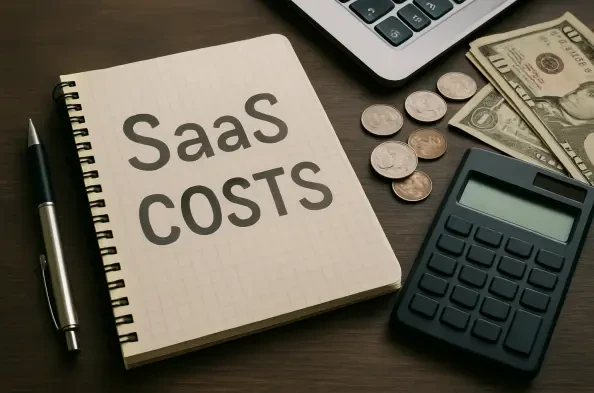In the fast-paced world of enterprise technology, Chief Information Officers (CIOs) are confronting a pressing issue that threatens to upend IT budgets and operational harmony: the relentless rise of Software as a Service (SaaS) costs coupled with the chaotic spread of software tools, often termed tool sprawl. This dual challenge has emerged as a critical concern for organizations striving to maintain financial discipline while fostering innovation. As businesses increasingly rely on cloud-based solutions to drive efficiency, the unchecked accumulation of tools and escalating subscription fees are creating a perfect storm. The financial strain is evident, with software spending projected to climb significantly, reflecting a deeper dependency on SaaS platforms. This growing reliance not only stretches budgets but also complicates management, leaving technology leaders to navigate a landscape where efficiency and cost control often seem at odds. The stakes are high, and the need for strategic intervention has never been more urgent.
Unpacking the Surge in SaaS Expenditure
Vendor Lock-In and Pricing Pressures
The escalating costs of SaaS solutions are largely driven by a phenomenon known as vendor lock-in, where businesses become so deeply integrated with a provider’s platform that switching to an alternative becomes a logistical and financial nightmare. This dependency empowers vendors to raise prices during renewals, often outpacing general inflation rates, as companies have little room to negotiate. Beyond mere price hikes, vendors frequently bundle new features or modules into contracts, compelling organizations to pay for functionalities they may not need. This tactic, often employed when businesses attempt to reduce user seats, adds another layer of complexity to budget planning. For CIOs, the challenge lies in balancing the benefits of these deeply embedded tools against the mounting costs, all while ensuring that critical operations remain unaffected by potential disruptions during vendor transitions or negotiations.
Another dimension of this pricing challenge is the evolving nature of vendor strategies in response to market dynamics. As enterprises attempt to trim expenses by scaling back on licenses or unused features, vendors counteract with steeper renewal rates or mandatory upgrades, effectively offsetting any savings. This creates a vicious cycle where cost-cutting measures inadvertently lead to higher expenditures. The lack of transparency in pricing models further complicates matters, as organizations struggle to predict future costs or assess the true value of their SaaS investments. For technology leaders, this underscores the need for robust vendor management practices and a keen understanding of contract details to mitigate the risk of being cornered into unfavorable terms. Without such vigilance, the financial burden of SaaS can spiral out of control, draining resources that could be allocated to innovation or other strategic priorities.
The Explosion of Software Categories
Adding fuel to the fire of rising SaaS costs is the rapid proliferation of software categories that cater to every conceivable business need, from cybersecurity solutions to niche cloud-based offerings like quantum-as-a-service. This vast array of tools tempts departments to adopt multiple platforms, often without a cohesive strategy, leading to overlapping functionalities and bloated budgets. The allure of cutting-edge technology drives adoption, but the cumulative effect is a fragmented IT environment where redundancy becomes the norm. This trend is particularly pronounced in larger organizations, where different teams may independently subscribe to similar tools, unaware of existing solutions already in use elsewhere in the company. The result is a significant drain on financial resources and a complex web of systems that are difficult to manage or integrate effectively.
Moreover, the constant emergence of new software categories reflects the accelerating pace of technological advancement, which, while beneficial, poses unique challenges for cost containment. Each new tool promises enhanced capabilities or competitive advantages, making it hard for businesses to resist adoption despite budget constraints. However, this often leads to a patchwork of solutions that fail to communicate with one another, undermining data consistency and operational efficiency. For CIOs, the task is to distinguish between essential tools and those that merely add to the clutter, a process that requires careful evaluation of long-term value versus immediate appeal. Without a disciplined approach to software acquisition, the proliferation of offerings will continue to drive up costs, leaving organizations vulnerable to inefficiencies that hinder their ability to focus on core business objectives or adapt to market changes.
Strategies to Rein in Tool Proliferation
Streamlining Through Consolidation Efforts
One of the most effective ways CIOs are addressing tool sprawl is through strategic consolidation, a process that involves reducing the number of overlapping or redundant software systems within an organization. A notable example comes from Perdue Farms, where the CIO spearheaded a digital transformation initiative that streamlined data tools into a cohesive set of platforms. This effort not only cut down on unnecessary systems but also enhanced data consistency, particularly in critical areas such as food safety, while simplifying training for staff. By focusing on a unified toolkit, the company was able to redirect resources from managing disparate systems to driving actionable insights through data analysis. Such consolidation efforts demonstrate that a targeted reduction in tool variety can yield significant cost savings and operational improvements, offering a blueprint for other enterprises facing similar challenges.
Another compelling case of consolidation can be seen at OpenText, where the CIO successfully reduced the company’s tool count from a staggering 1,600 to a more manageable 1,200. This included merging 50 developer tools into a single, streamlined toolkit, which not only lowered costs but also improved product quality and eased the onboarding process for new employees. The key to this success was a clear vision of the desired “target state” for tool usage, coupled with a commitment to decommissioning outdated or redundant systems. This approach prevented cost duplication and ensured that the remaining tools aligned with strategic business goals. For technology leaders across industries, these examples highlight the importance of proactive planning and the tangible benefits of a leaner software ecosystem, which can enhance focus on innovation rather than maintenance of an unwieldy tech stack.
Building Robust Governance Frameworks
To prevent the unchecked spread of software tools, many experts advocate for the establishment of strong governance frameworks that provide centralized oversight of software procurement and usage. Creating dedicated bodies within organizations to monitor tool sprawl, set long-term objectives, and enforce guidelines can bring much-needed discipline to what is often a decentralized process. Such structures help ensure that software acquisitions align with broader business strategies, rather than being driven by short-term departmental needs. A critical component of this governance is the maintenance of an enterprise software catalog, which acts as a comprehensive inventory to track existing tools and prevent redundant purchases. This foundational practice can significantly reduce wasteful spending and promote a more cohesive IT environment.
Additionally, governance frameworks must address the cultural aspects of software adoption within organizations, as resistance to centralized control can undermine even the best-laid plans. Encouraging collaboration between IT, procurement, and business units is essential to foster a shared understanding of tool usage policies and the rationale behind them. Regular audits and reviews of software portfolios can further reinforce accountability, ensuring that tools no longer in use are decommissioned promptly to avoid lingering costs. For CIOs, the challenge lies in balancing the need for oversight with the flexibility required by different teams to meet their unique operational demands. By embedding governance into the fabric of IT strategy, organizations can create a sustainable approach to managing tool sprawl, ultimately safeguarding budgets while maintaining the agility needed to adapt to evolving technological landscapes.
Navigating the Future of IT Spending
Software’s Growing Share of Budgets
Looking toward the horizon, industry projections suggest that software could dominate IT budgets, potentially accounting for half or more of total spending within the next decade. As costs for labor and traditional infrastructure decline—thanks to widespread cloud migration and more affordable hardware—software remains the primary area of expenditure growth. This shift signals a profound transformation in how technology resources are allocated, with SaaS and other software solutions taking center stage. For CIOs, this trend necessitates a reevaluation of priorities, as their role increasingly pivots toward strategic software management rather than traditional IT oversight. The implications are far-reaching, requiring a deeper focus on optimizing software investments to ensure they deliver measurable value while avoiding the pitfalls of unchecked expansion that can erode financial stability.
The growing dominance of software in budgets also underscores the unique challenges of managing SaaS costs compared to other IT expenses. Unlike infrastructure costs, which can often be controlled through standardized practices, SaaS pricing models vary widely across numerous vendors, making uniform cost-cutting strategies ineffective. This complexity demands tailored approaches, with technology leaders investing significant effort in understanding vendor dynamics and negotiating favorable terms. As software’s share of budgets expands, the ability to anticipate and adapt to these pricing intricacies will be critical. Organizations that fail to address this shift risk being overwhelmed by costs that outpace their capacity to innovate, highlighting the urgency for proactive strategies that align software spending with long-term business objectives.
Adapting to a Software-Centric Landscape
Reflecting on the progress made, it becomes clear that CIOs have had to confront the reality of rising SaaS costs and tool sprawl with decisive action in recent times. Many have turned to consolidation as a powerful tool, trimming redundant systems to enhance efficiency and redirect focus toward innovation. Governance has emerged as a cornerstone, with structured oversight helping to curb decentralized spending and instill discipline in procurement processes. These efforts have laid the groundwork for a more sustainable approach to software management, even as challenges like vendor lock-in persist.
Moving forward, the path involves embracing advanced analytics to gain deeper insights into software usage patterns, enabling more informed decisions about tool retention or elimination. Partnering with vendors to explore flexible pricing models could also alleviate financial pressures. Additionally, fostering a culture of cross-departmental collaboration ensures that software investments align with overarching goals. By prioritizing these steps, technology leaders can transform the burden of software dominance into an opportunity for strategic growth and resilience.






